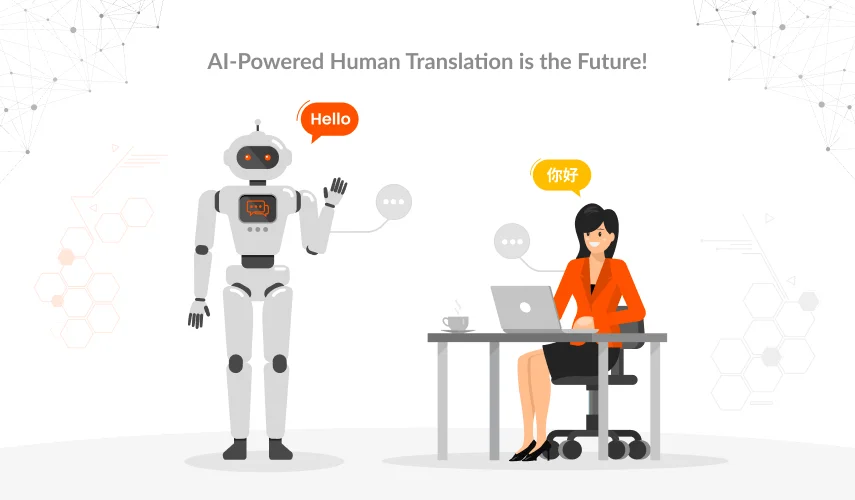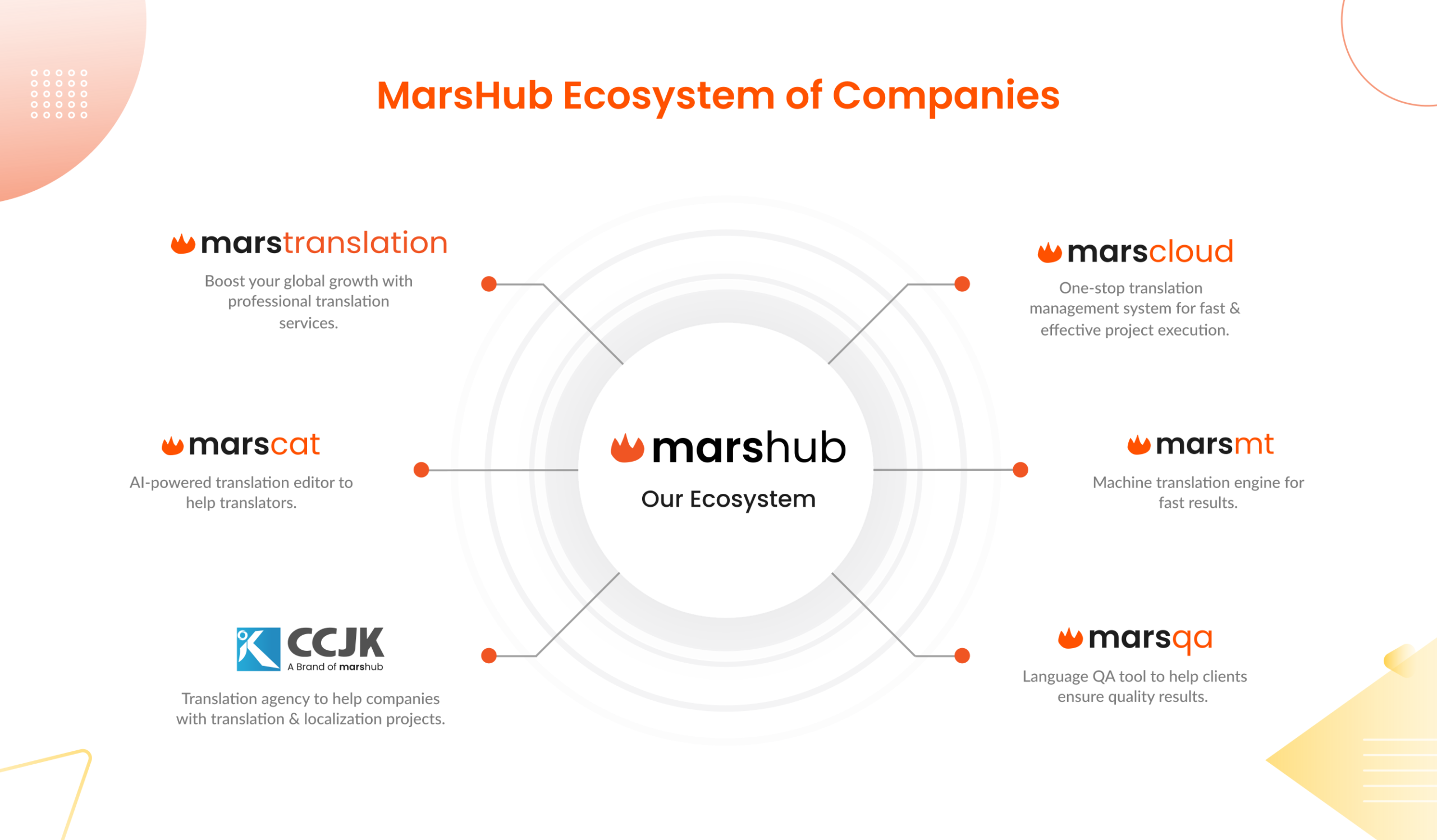The translation industry has changed drastically over the past few years since the emergence of AI technologies. Tools like Google Translate have been around for a while, but nothing seems to beat a human translator’s expertise, until very recently.
As we can see, advanced AI tools are taking up more space in the translation sector, and it is high time that LSPs and translation agencies rethink their translation methods.
The debate is no longer about machines replacing humans; if anything, AI supports human translators to optimize their workflows and free up work space for more creative and nuanced tasks.
Your translation approaches have to be compatible with today’s increasing market demands, as more businesses are going global with localized identities.
Let’s dig deep into this article to understand why your old school ways of translating are not workable anymore.
Constraints of Traditional Translation Approaches
Expanding your business into foreign markets using typical human translation practices can affect your growth and performance globally. So, from budgeting to turnaround times, traditionally managed human translations have had many limitations.
Scalability
Manual translation struggles to scale effectively with growing translation needs in this hyper globalized world. It is also very time-consuming and costly for businesses to hire and manage a large team of translators.
Cost
Traditional human translations are often very expensive because of the amount of time and industrial expertise required. High translation costs can be a barrier for businesses looking for professional translations for global expansions.
Time
Translation projects, solely managed by human translators, can take significant time to complete. So, if a business is seeking translations for a large volume of content, the turnaround times will be much higher.
Early Machine Translation Technology Had Its Limitations Too
Google introduced its MT engine, “Google Translate,” in April 2006. Ever since then, there have been many machine translation tools around the corner, offering quick and cheap translations within seconds. However, such tools always struggle with quality and are unable to provide nuanced translations without compromising the context of the original message.
Yet, the use of machine translation tools keeps growing with every passing year, and the technology has improved significantly with advanced translation capabilities.
AI-powered Technologies Fundamentally Changed the Translation Industry
The real transformation in the translation industry only happened after the emergence of AI. The sophisticated algorithms of AI analyze huge amounts of data and work side by side with neural machine translation (NMT) to create high quality translation outcomes.
So, what makes AI technology different from machine translation tools?
High Contextual Awareness
AI algorithms have advanced machine learning capabilities that enable them to deeply understand the context of a message and catch the underlying emotions. NMTs using AI technology are good at generating natural sounding translations close to humans.
Industry Specific Algorithm Training
AI powered NMT models can be trained for specific industries, such as legal documents, medical trials, or technical manuals. It ensures accurate translations that can be trained on the terminologies of different domains.
Continuous Learning
Unlike static early MT tools, AI translation algorithms constantly learn and improve. These tools scan through more data and can handle new phrases, adapt to different writing styles, and translate the content with the utmost accuracy.
Translation Agencies Are Adopting Human-Machine Collaboration as a New Standard!
Global businesses require more refined, fast, and efficient translation solutions that can fuel their foreign market expansions in this highly competitive business landscape. Let’s have a look at how AI translation tools are transforming the way translations are approached, managed, proofread, and delivered to clients, and why LSPs must get their hands on them for an improved translation experience.
Human Assisted Machine Translations (HAMT)
| Feature | Human-Assisted Machine Translation (HAMT) | Machine Translation Post-Editing (MTPE) |
| Workflow | Translations are primarily done by AI tools, and human refines later. | MT tool is used as a suggestion, and more time is spent editing the initial draft. |
| Focus | Efficiency, Cost-effectiveness | Accuracy, Quality |
| Suitable for | Large volumes of content | Critical documents, marketing materials |
| Human effort | Less time is spent on editing | More time is spent on editing |
HAMT is one step ahead of machine translation post editing, in which AI translation engines take the lead to generate maximum translations. Human translators review and refine that content afterward to make it more fluent, and culturally appropriate. The majority of translation work is done by machine CAT tools, and humans can focus more on quality considerations, such as style consistency and terminology management.
_ Lower Translation Cost
The HAMT technique can be significantly cheaper than traditional human translations, making it a more accessible option for businesses targeting multiple markets simultaneously.
_ High Speed Outcomes
Initial translation drafts are created by machine tools that reduce turnaround times and allow the translators to focus more on quality control instead of taking up the whole translation workload.
QA Editing Tools
Automated quality assurance (QA) tools are specially designed software programs that streamline the translation process and make post-editing of machine translations fast and smooth. These tools utilize AI algorithms to save time and ensure consistent terminology across projects. You can use the MarsQA editing tool with a user-friendly interface to assist professional editors and translators optimize their translation quality.
_ Quick Proofreading and Error Detection
Many translation agencies are using automated QA tools as a crucial part of their editing process for quick and more effective proofreading. It identifies inconsistencies and errors in your content within seconds, allowing the editors to refine more work in less time.
Translation Management Systems (TMSs)
It is quite challenging to navigate the complexities of creating multilingual content, especially if you are targeting diverse markets or dealing with many clients globally. TMSs are specialized tools designed to ease the translation process by automating workflows and incorporating smart AI algorithms to replace manual efforts with machine intelligence.
MarsCloud is a smart TMS for enterprises, LSPs, and translators to manage their translation tasks, teams, and resources seamlessly.
_ Fast Turnaround Times
TMS streamlines the translation tasks and eliminates the complicated operations that would require manual efforts. Translators can manage more content work in less time, which allows businesses to reduce their time to market in foreign regions.
Speech Recognition Technology
The market size in the speech-based NLP market is estimated to reach US$21.27bn in 2024. Speech recognition tools can transcribe audio content like interviews, lectures, or podcasts into text much faster than manual transcription. Translators can start working on the translation immediately, which reduces their translation turnaround times. Moreover, it also streamlines the workflow for the HAMT process.
_ Convenience of Translating Voice-Overs
Speech recognition technology makes the translations, subtitling, and voiceovers of audio and video content easier and faster. So, whether you are a filmmaker, podcast host, or travel vlogger, this technology opens doors for increased global accessibility and worldwide content distribution.
Cloud Based Solutions with Integration Options
Smart cloud tools operate on remote services and are accessed through the internet. You no longer need traditional desktop systems that will require installations, maintenance, and a lot of space on your device. And the best thing is, many of these cloud-based tools come with integrations, so you don’t have to constantly switch between different apps.
_ High Accessibility, Scalability, and Portability
You can access cloud-based translation tools from anywhere with an internet connection. Additionally, these solutions can be integrated with other platforms like content management systems (CMS) or customer relationship management (CRM) software, which will streamline translation operations and improve data exchange.
Are You Adapting?
As AI continues to develop, businesses must adapt their translation methods to stay relevant and grow steadily. To cope with the fast-paced tech world, businesses have to redefine their translation strategies by incorporating technological tools in the process. In case you are outsourcing, make sure to partner with reliable agencies with proven expertise in the translation domain.



